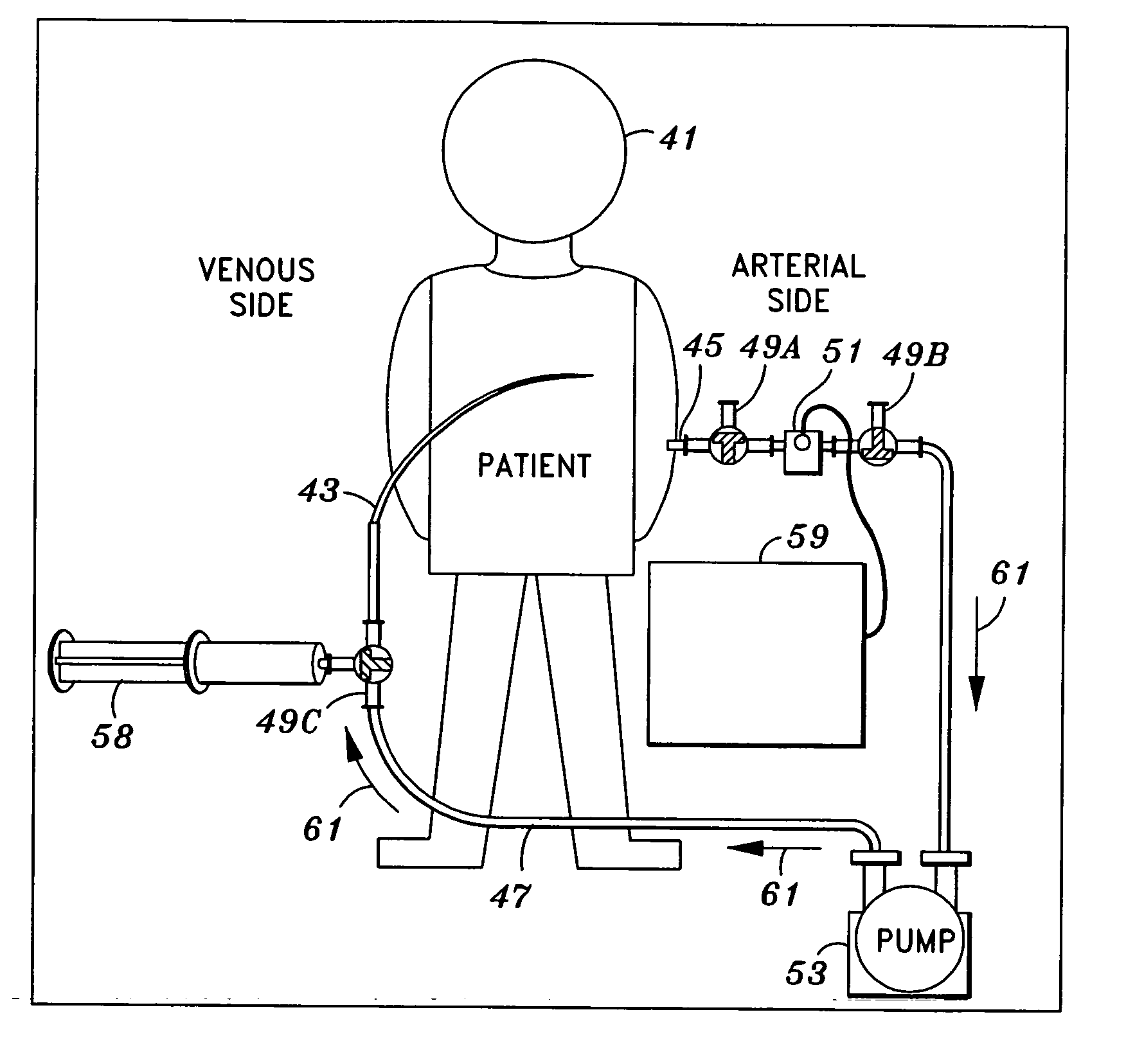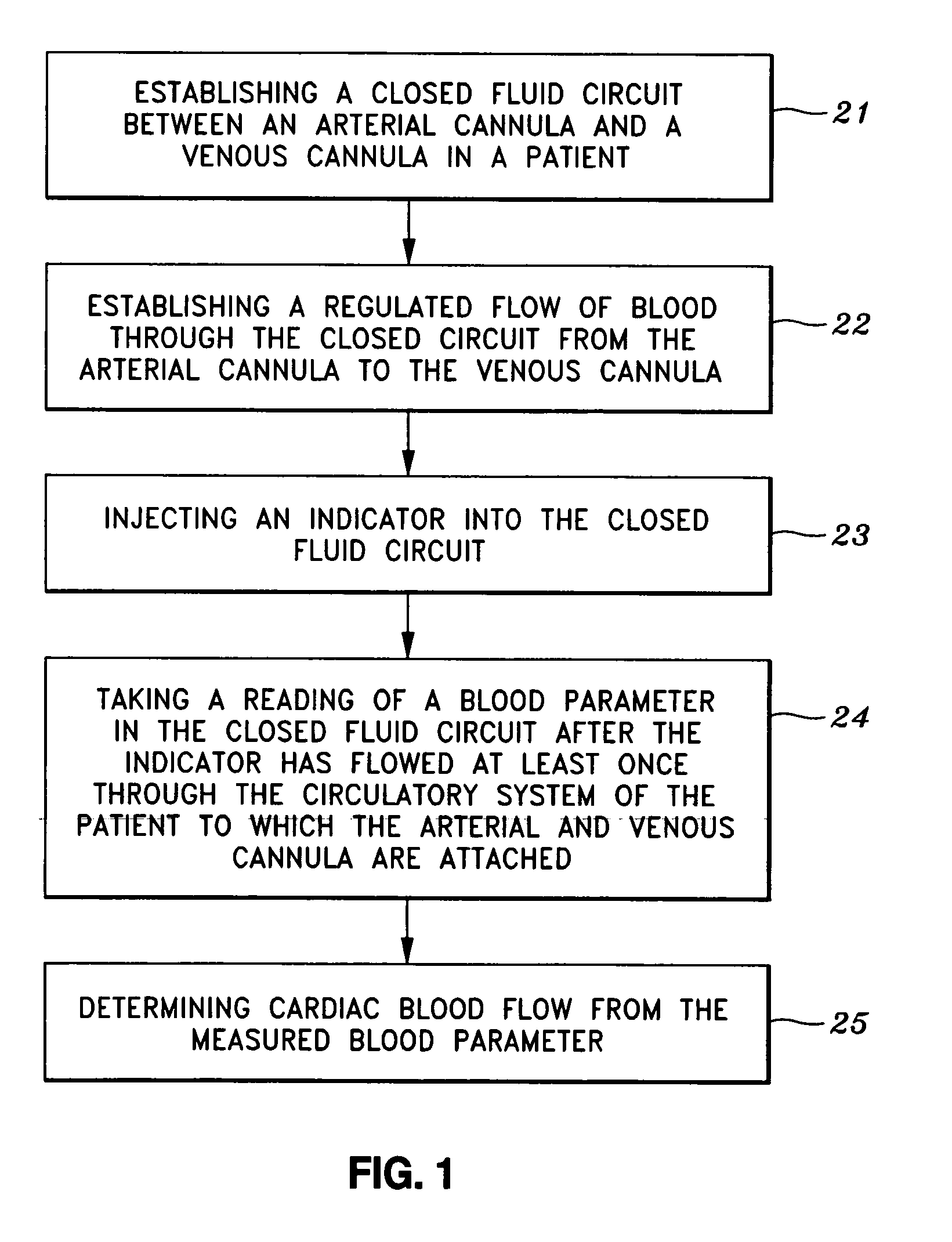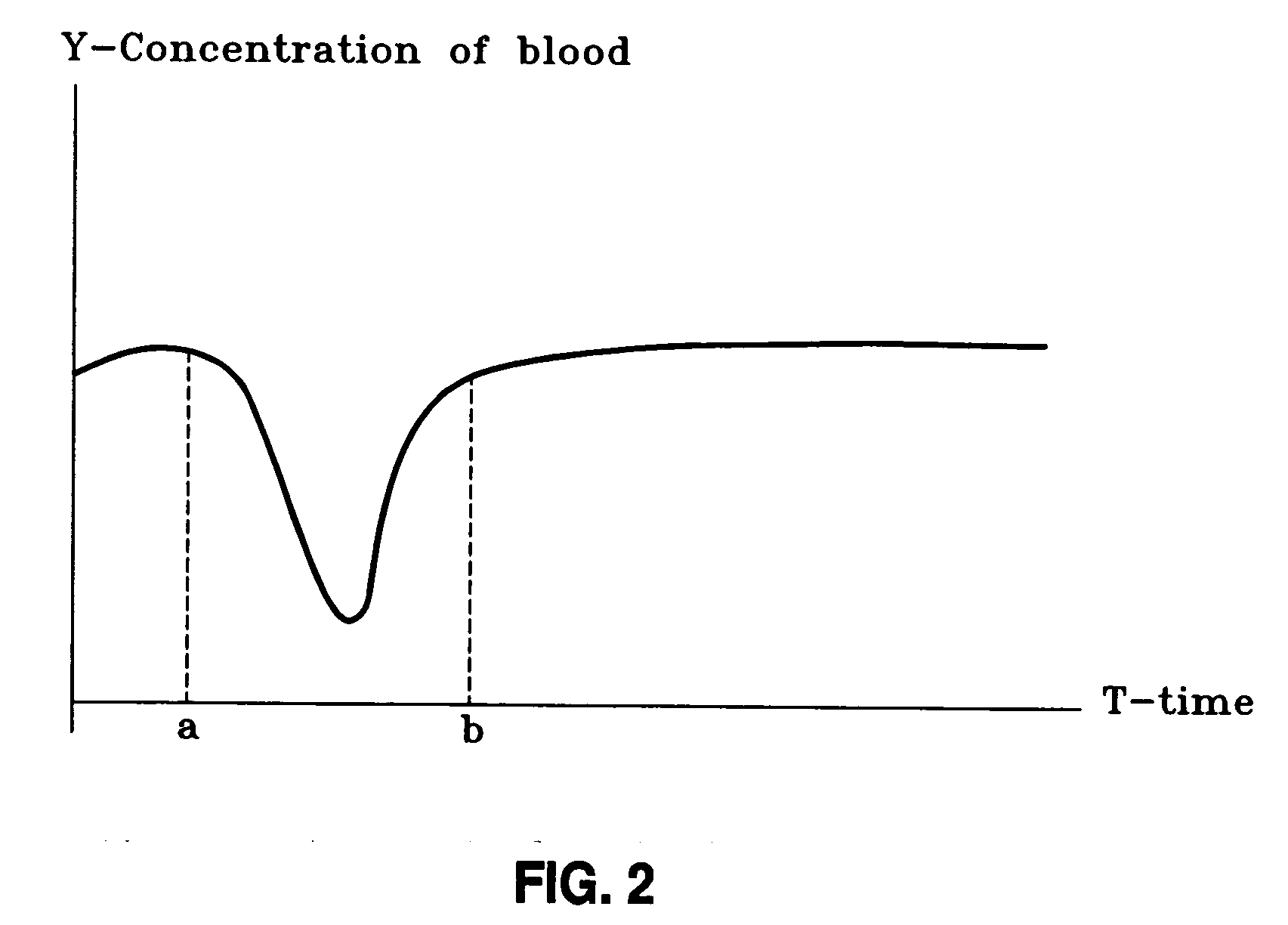System and method for determining cardiac output
a cardiac output and cardiac output technology, applied in the field of monitoring the vital signs of patients, can solve the problems of inability to use such inter-arterial or venous catheters with sensors, inability to detect the toxicity of lithium dilution indicators, and loss of blood to patients, etc., and achieves the effect of easy implementation and easy incorporation
- Summary
- Abstract
- Description
- Claims
- Application Information
AI Technical Summary
Benefits of technology
Problems solved by technology
Method used
Image
Examples
Embodiment Construction
[0022] Patients in intensive care unit (ICU) typically have one or more intravenous catheter or cannula and intra-arterial catheter or cannula connected to them. The intravenous cannula or catheter are typically attached to a vein and allow the intravenous feeding of drugs and other substances to the patient. The intra-arterial cannulas or catheters are connected to an artery of the patient and allow the obtaining of direct and precise blood pressure readings. The readings are obtained by connecting pressure cannula to a pressure sensor through the tubing line filled usually with heparinized saline. The saline is slowly delivered into cannula to, prevent clotting.
[0023] The actual artery or vein to which the cannula is attached will depend on the requirements of the treatment. Typically the venous cannula is connected to the central venous system which could often be in a jugular vein; or a femoral vein. The arterial cannula is often connected to a radial or a femoral artery or to ...
PUM
 Login to View More
Login to View More Abstract
Description
Claims
Application Information
 Login to View More
Login to View More - R&D
- Intellectual Property
- Life Sciences
- Materials
- Tech Scout
- Unparalleled Data Quality
- Higher Quality Content
- 60% Fewer Hallucinations
Browse by: Latest US Patents, China's latest patents, Technical Efficacy Thesaurus, Application Domain, Technology Topic, Popular Technical Reports.
© 2025 PatSnap. All rights reserved.Legal|Privacy policy|Modern Slavery Act Transparency Statement|Sitemap|About US| Contact US: help@patsnap.com



